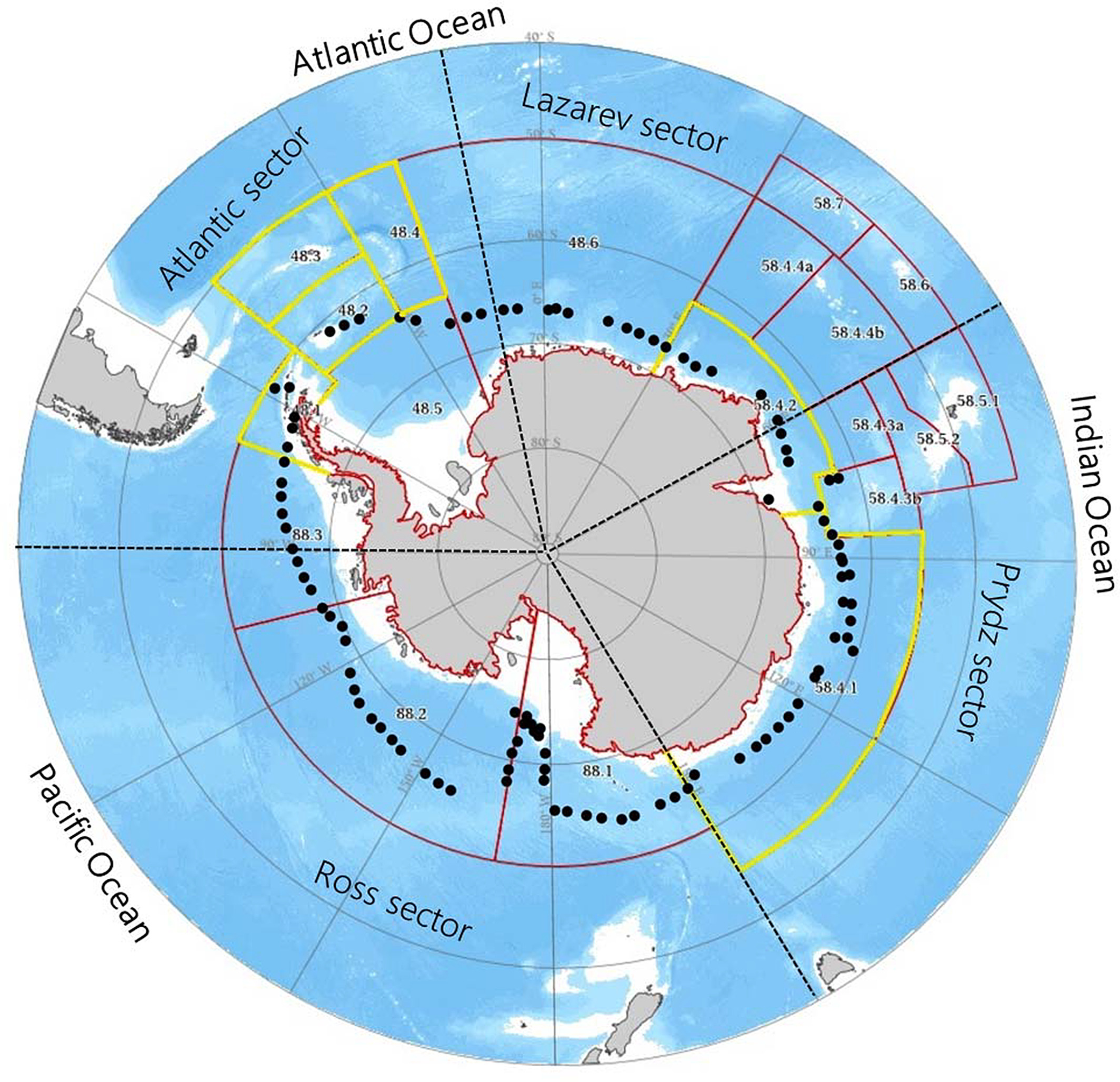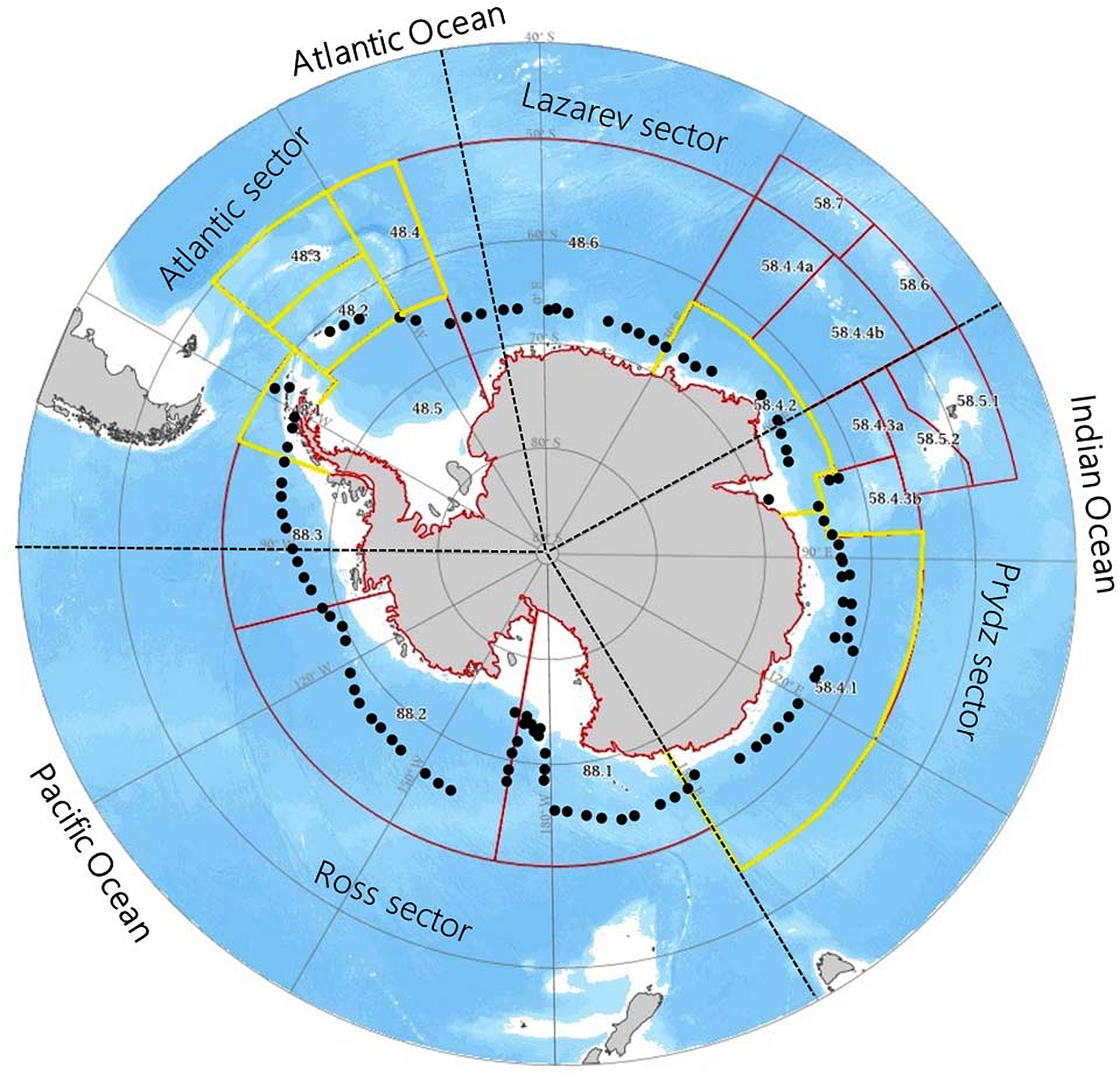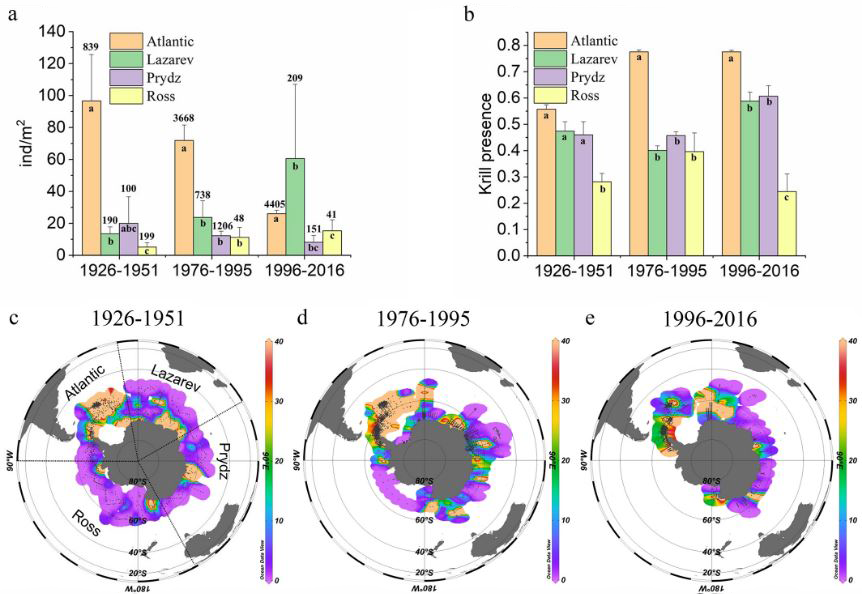Story
GOOD NEWS: Habitat refuges of Antarctic krill provide shelter from climate change
22 September 2020
New research published in Limnology and Oceanography shows that Antarctic krill, a key link in the Southern Ocean food web, has refuges from the rapid climatic warming and ice loss that has degraded part of its habitat.

It has long been thought that the Atlantic sector of the Southern Ocean formed the epicentre of the global krill distribution. This has raised alarm bells for conservation of their stocks, since this particular region has been one of the fastest warming ocean regions on the planet.
This new research shows that, while this sector can support fewer krill than before due to habitat degradation, the more stable Indian and Pacific sectors are acting as refuges, possibly even holding more krill than they did a century ago.
Antarctic krill support a unique food web and a valuable commercial fishery, which is concentrated in the south-west Atlantic sector. Whether or not krill stocks have declined as this sector has warmed is an issue of intense debate, and this uncertainty has been a headache for managers of the fishery.
This study provides a wider, circumpolar-scale perspective on these krill stocks. A wider scale view is timely – this sort of information is needed to plan a network of marine protected areas (MPAs) around Antarctica and for evidence-based management of its various fisheries.
The work is a collaboration between scientists from China, UK and Italy, with the UK component being supported by the Worldwide Fund for Nature (WWF).
 Central to the study was a recent Chinese circumnavigation cruise sampling over 100 stations – a ring of stations around Antarctica. This feat, on icebreaker “Xuelong”, is probably unmatched in modern times and provided the necessary circumpolar perspective, helped by an existing circumpolar database of krill spanning the last 90 years.
Central to the study was a recent Chinese circumnavigation cruise sampling over 100 stations – a ring of stations around Antarctica. This feat, on icebreaker “Xuelong”, is probably unmatched in modern times and provided the necessary circumpolar perspective, helped by an existing circumpolar database of krill spanning the last 90 years.
First author Dr Guang Yang, Junior Marine Ecologist from the Institute of Oceanology, Chinese Academy of Sciences (IOCAS) said: “Most plankton species, including krill, are distributed in a ring right around Antarctica, but their habitats are changing at different rates from sector to sector. We used this as a kind of natural experiment to trace the changing fortunes of krill in each of the sectors”.
Co-author Dr Angus Atkinson, Senior Ecologist at Plymouth Marine Laboratory, added: “This is a great example of how the different nations working around Antarctica can combine their ideas and data. A spirit of cooperation is essential for a joined-up approach to management and conservation around Antarctica”.
Co-author Dr Simeon Hill, Senior Fisheries Modeller at the British Antarctic Survey (BAS) continued: “The Southern Ocean is a huge and complex ecosystem. By pulling together multiple data sources from multiple locations we are beginning to see the bigger picture, which is that some areas have changed more rapidly than others”.
Rod Downie, Chief Polar Advisor at WWF, said: “Krill are the superheroes of the Southern Ocean, which is on the frontline of the climate crisis. They feed huge populations of wildlife, from Adélie penguins to blue whales. They sequester millions of tonnes of carbon every year into the deep ocean, helping to maintain a stable climate for life on earth."
“This study highlights new areas which may serve as safe havens’ for krill into the future as Antarctica feels the heat. It is critical to identify and protect these regions in a vast network of marine protected areas surrounding the icy continent”.
Related information
“Changing circumpolar distributions and isoscapes of Antarctic krill: Indo-Pacific habitat refuges counter long-term degradation of the Atlantic sector” is Open Access and available for ‘early online view’ on the Limnology and Oceanography website.
